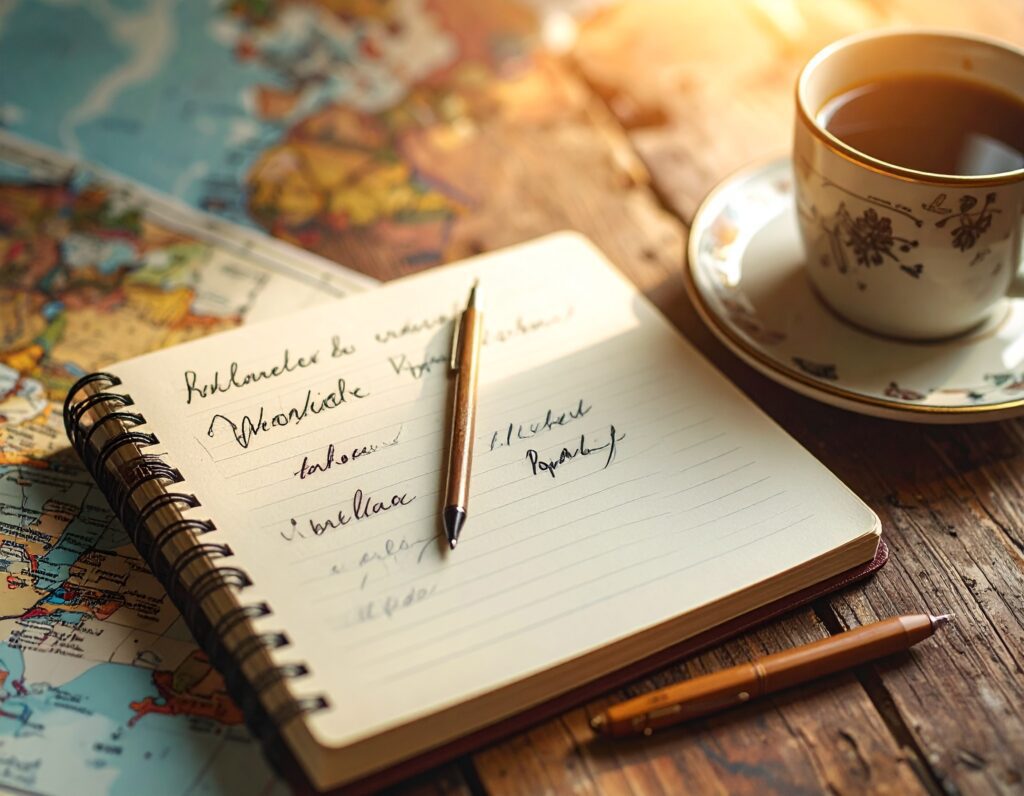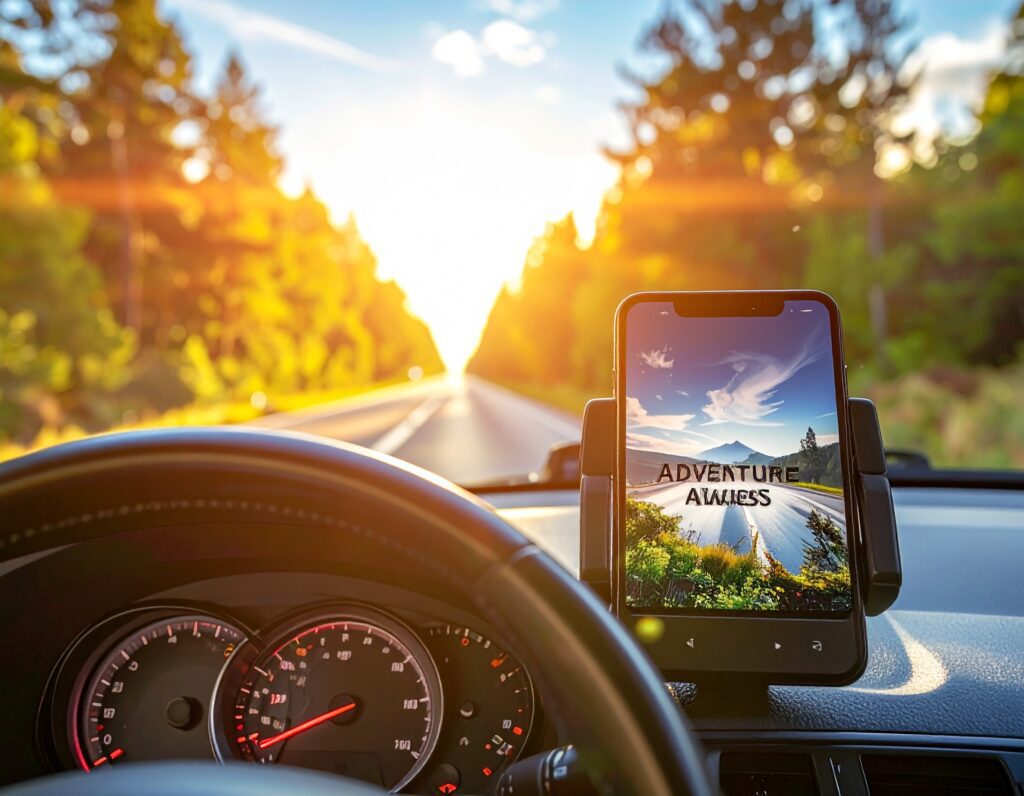The Ultimate Solo Backpacker Road Trip Guide: Your Adventure Awaits
Remember that feeling when you first thought about hitting the open road alone? That mix of excitement and “wait, can I actually do this?” I’ve been there. Let me tell you, planning your first solo backpacker road trip doesn’t have to be overwhelming. Think of it as preparing for the adventure of a lifetime, one step at a time.

Why Solo Road Trips Transform You (And How to Start)
There’s something magical about waking up in your car, checking the map, and realizing you can go literally anywhere. No compromises, no arguments about bathroom breaks, just you and the endless highway. But before we get too romantic about it, let’s talk about actually making this happen.
Step 1: Dream First, Plan Second
Choosing Your Route (Without Overthinking It)
Here’s what I learned the hard way: don’t plan every single hour. Seriously. I once met a guy in a Nevada rest stop who had a 47-page itinerary. He was miserable, constantly stressed about “falling behind schedule.” Meanwhile, I’d just discovered an incredible hot spring because a waitress mentioned it over breakfast.
Start with this simple approach:
- Pick 3-5 “must-see” destinations
- Calculate driving time between them (add 20% for reality)
- Leave 2-3 completely unplanned days between major stops
- Mark interesting spots along the way, but don’t commit to all of them
Use Google Maps or Roadtrippers to visualize your journey. Screenshot everything because cell service gets weird in beautiful places.
The Money Talk (Let’s Be Real)
Nobody wants to run out of cash in the middle of nowhere. I’ve eaten gas station sandwiches for three days straight, and let me tell you, it’s not the adventure you want.
Budget breakdown for backpackers:
- Fuel: Calculate your vehicle’s MPG × total miles ÷ current gas prices (add 15% buffer)
- Sleeping: $0-30 per night (mix camping with occasional hostels)
- Food: $15-25 daily (cooking yourself saves a fortune)
- Activities: $10-20 daily average
- Emergency fund: At least $500 separate from daily budget
Pro tip: Get a National Parks Annual Pass ($80) if you’re visiting more than three parks. It pays for itself and makes you feel like a legit adventurer.
Step 2: Prepping Your Ride (And Yourself)
Vehicle Check: The Boring Stuff That Saves Your Trip
Two weeks before departure, get your car checked. Not the day before. Not “eh, it’s probably fine.” A proper inspection by a real mechanic.
The essential checklist:
- Oil change and all fluid levels
- Tire condition and pressure (including spare!)
- Brakes and battery
- Lights and wipers
- Air conditioning (trust me, summer deserts are no joke)
Emergency kit essentials:
- Spare tire, jack, and tire iron (and know how to use them!)
- Jumper cables or portable jump starter
- Basic tool set
- Flashlight with extra batteries
- First aid kit
- Duct tape (fixes literally everything temporarily)
- Phone charger and power bank
Packing Like a Pro Backpacker
Your car isn’t a storage unit. You’re going to live in this space, so think minimalist with purpose.
The backpacker’s road trip packing list:
Sleeping Setup:
- Compact sleeping bag
- Camping pad or inflatable mattress
- Small pillow (or stuff a jacket in a stuff sack)
- Tent if camping (or sleep in your car with window screens)
Clothing (7 days max, wash as needed):
- 3 t-shirts
- 2 long sleeves
- 2 pants/shorts
- 1 warm layer
- Rain jacket
- 7 underwear/socks
- Hiking shoes + flip-flops
- Swimsuit (opportunities appear randomly)
Kitchen:
- Portable camping stove
- One pot, one pan
- Utensils and pocket knife
- Reusable water bottles (2 liters minimum)
- Coffee/tea setup (non-negotiable for morning humans)
- Cooler with ice packs
Tech & Navigation:
- Phone with offline maps downloaded (Google Maps lets you do this)
- Car phone mount
- Paper atlas backup (yes, really)
- Camera if you’re into that
- Entertainment: audiobooks, music playlists, podcasts downloaded
Step 3: Safety Without Paranoia
The Check-In System
Share your rough itinerary with someone who actually checks their phone. I use a shared Google Doc that I update every few days with my general location and next planned stop.
Send location pins when you settle somewhere for the night. It’s not paranoid; it’s smart.
Trust Your Gut (It’s Smarter Than You Think)
That rest stop that feels weird? Skip it. The friendly local who seems off? Polite wave and move on. The campsite that’s too isolated? Find another one.
But also: that diner with the weird name? Try it. That detour someone mentioned? Take it. Solo travel means listening to both your caution and your curiosity.
Where to Sleep Safely
Free/Cheap Options:
- BLM land (Bureau of Land Management – totally legal, often beautiful)
- National Forest dispersed camping
- Walmart parking lots (ask permission, not all allow it)
- Rest stops (naps only, not overnight in most states)
- iOverlander app shows thousands of spots
Budget-Friendly Paid Options:
- State park campgrounds ($15-30)
- Hostels ($25-40)
- Budget motels every 3-4 days for real showers
Step 4: Life on the Road
Your Daily Rhythm
Wake up with the sun or sleep in – you’re the boss. But here’s a rhythm that works:
Morning: Make coffee, check weather and road conditions, decide on the day’s destination (or don’t)
Driving: Start early, stop every 90-120 minutes. Seriously, stretching prevents both accidents and feeling like a pretzel.
Afternoon: Arrive at your general area by 3-4 PM. This gives you time to explore, find camping spots in daylight, and settle in stress-free.
Evening: Cook dinner, watch the sunset, journal or read, meet other travelers, sleep early for tomorrow’s adventure
Eating Well on a Backpacker Budget
Gas station hot dogs get old fast. Here’s how to eat like a human:
- Grocery shop at local stores in towns (not tourist areas)
- Easy meals: overnight oats, sandwiches, pasta, canned soup, eggs, rice and beans
- Splurge wisely: eat out for one meal every few days, choose local favorites
- Snack smart: nuts, dried fruit, granola bars, fresh fruit
That local taco stand everyone’s raving about? Worth every penny. The overpriced tourist trap with a view? Make a sandwich and enjoy that view for free.
Step 5: Making It Memorable
Embracing Solo Freedom
The first few days might feel weird. You’ll wonder if you should’ve brought a friend. Then something shifts. Maybe it’s when you decide to take a completely random turn because the road looked interesting. Or when you have a two-hour conversation with a 70-year-old at a campground who tells you about the best swimming hole nearby.
Solo travel superpowers you’ll discover:
- Changing plans instantly without discussion
- Meeting people more easily (solo travelers attract conversations)
- Learning what you actually enjoy (vs. what you thought you enjoyed)
- Gaining confidence in your own company
- Creating space for real reflection and growth
Documenting Your Journey
You don’t need Instagram-perfect content. Take photos that make you smile. Journal the weird moments, the kind strangers, the unexpected beauty. Voice record your thoughts while driving (hands-free!).
Six months later, you won’t remember every vista, but you’ll treasure the story about getting lost and finding that perfect hidden lake.
Connecting on the Road
Being solo doesn’t mean being lonely. Chat with:
- Other campers (offer to share your fire, they’ll share their whiskey)
- Waitresses and bartenders (they know everything about the area)
- Park rangers (underrated source of secret spots)
- Fellow travelers at hostels and coffee shops
Some of my best travel memories are random conversations that turned into hiking buddies for the day or dinner companions who became lifelong friends.
Common Beginner Worries (And Real Talk)
“What if I get lonely?” You will sometimes. That’s okay. It’s different from the loneliness back home. It’s temporary and often leads to interesting encounters or peaceful self-reflection.
“What if something breaks?” AAA membership or similar roadside assistance. Period. It’s like $60 and worth every cent for peace of mind.
“What if I run out of money?” Build that buffer, track spending with an app, and adjust. Worst case? Head home early. You still had an adventure.
“What if I’m not outdoorsy enough?” You don’t have to camp every night. You don’t have to hike 20 miles. Mix comfort with adventure at your own pace.
Your Journey Starts Now
Planning a solo backpacker road trip is really about giving yourself permission to explore, make mistakes, change your mind, and discover who you are when nobody’s watching. It’s less about the perfect itinerary and more about opening yourself up to possibility.
So pick a direction, pack light, save some money, and go. The road is waiting, and it has a funny way of giving you exactly the adventure you need.
Quick Start Action Plan:
- Choose your departure month
- Set a realistic budget this week
- Get your vehicle checked next week
- Book your first night’s accommodation only
- Leave room for everything else to unfold naturally
Remember: every solo traveler you see on the road was once sitting exactly where you are right now, wondering if they could do it. They did. You can too.
Now close this guide and start daydreaming about where you want to wake up three weeks from now. That’s where your planning really begins.
Safe travels, adventurer. The open road is calling.

